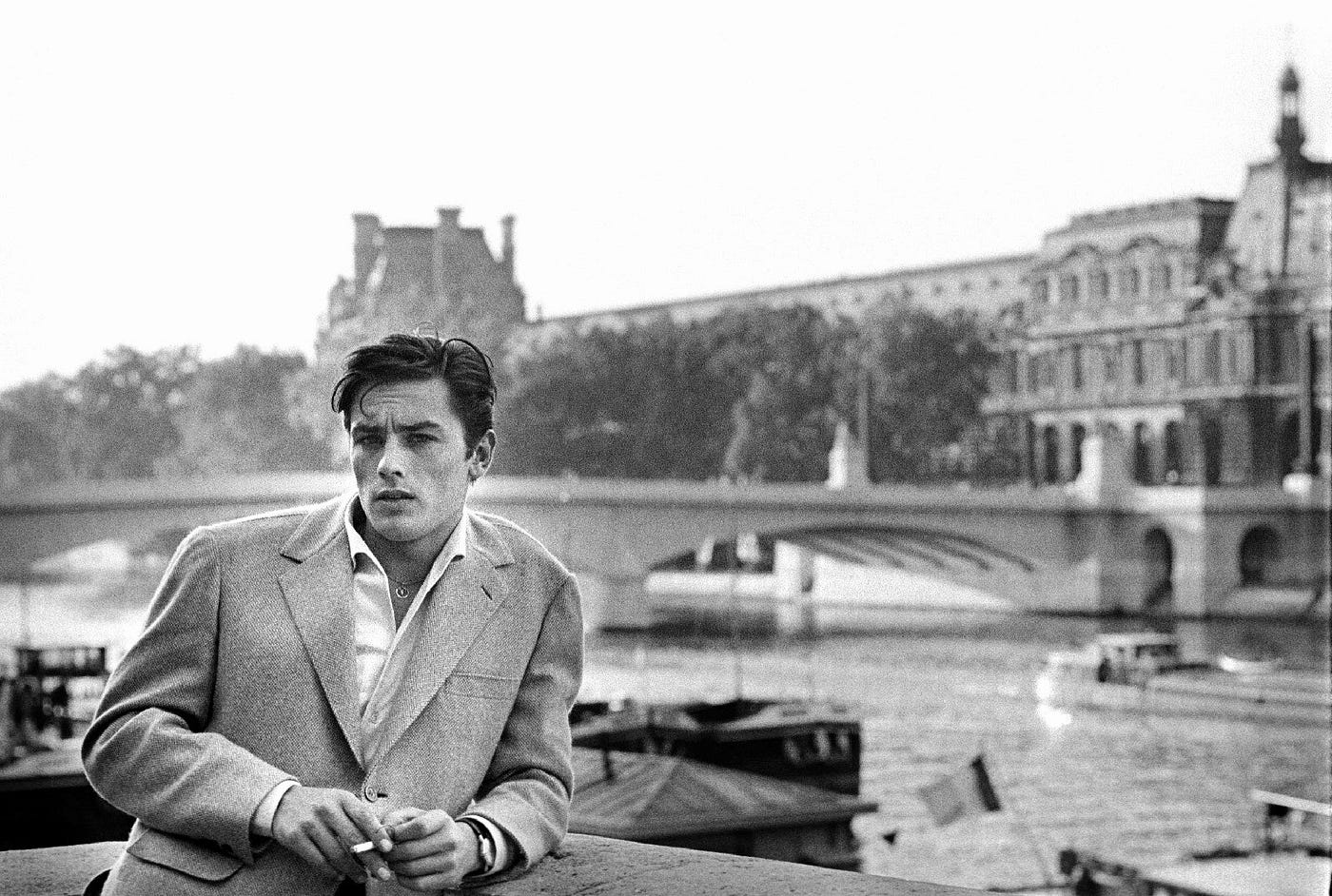Alain Delon, a French film star who captivated audiences with his striking looks and enigmatic presence, has long been considered one of the greatest actors of his generation. From his early days of fame to his complex portrayals on screen, Delon’s career is marked by both beauty and a profound sense of mystery.

The early allure of Alain Delon
In the early 1960s, Alain Delon emerged as a major cinematic figure. His image, captured in iconic photographs, featured a handsome young man with an open white shirt, a loose dark tie, and tousled black hair. Holding a telephone receiver in one hand and a lit cigarette in the other, Delon exuded an air of charm and seduction. His smile, described as almost impudent, reflected his role as both a seducer and a deceiver.
In 1961, Delon appeared on the cover of the German magazine Bravo, where he was depicted with dark eyes and soft lips, causing German families to metaphorically lock up their daughters. The magazine highlighted his role in Heinz Martin’s report, “Nicht zu spät, Romy!” (Not too late, Romy!), portraying Delon as a dangerous but alluring foreign figure disrupting the moral certainty of the German film queen.

From youthful charisma to a more complex persona
Delon’s youthful allure began to fade as he transitioned to more complex roles. In Luchino Visconti’s The Leopard (1963), Delon’s character, Tancredi, is full of energy and hope, contrasting with Burt Lancaster’s static presence. Despite his dynamic portrayal, Delon’s character embodies a relationship that, as Giuseppe Tomasi di Lampedusa wrote, “never quite succeeds,” even in its erotic aspects. Delon’s face, once open and engaging, soon became more reserved, hinting at a darker, deeper complexity.
Delon proved to be the ideal Tom Ripley, Patricia Highsmith’s iconic character who, despite lacking clear personal traits, aspires to be among the elite, even through ruthless murder. Delon’s ability to assume different identities highlighted his own ambiguous nature. His performance was marked by a psychological depth that transcended simple explanations.
Water, smoke, and the embodiment of desire
In Purple Noon (1960), Delon’s star-making film, the story delves into themes of murder and identity against the backdrop of the sea. Delon’s presence, often paired with water and smoke, created a powerful synergy. Whether it’s the scene where Ripley is reborn from the water after a murder or in Swimming Pool (2003), where Delon’s relationship with Romy Schneider becomes entangled, Delon’s physicality and aura are perfectly complemented by the elements of water and smoke. His character in Swimming Pool lacks a heart, a reflection of the disillusionment and existential angst depicted by psychologists who once analyzed Delon’s troubled youth.
The unbearable beauty and inherent nihilism
Purple Noon not only showcased Delon’s physique as an object of desire but also revealed the unbearable nature of his beauty. His allure was marred by an unfulfilled erotic promise and a disillusioned political heroism. Additionally, beneath his charming exterior lay a nihilistic cruelty, a purposeless anger, and an intrinsic sense of alienation, marking a stark contrast to his earlier seductive persona.
Delon’s legacy remains a complex interplay of beauty, charm, and deep-seated existential darkness, cementing his place as a cinematic icon whose impact extends beyond mere appearance.






